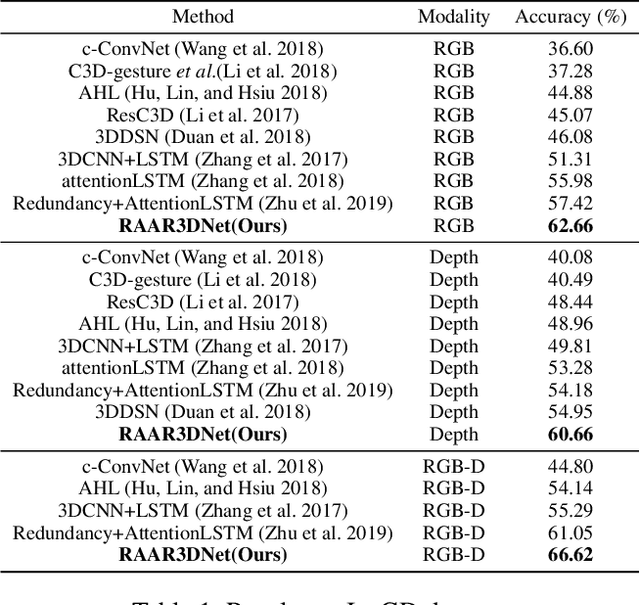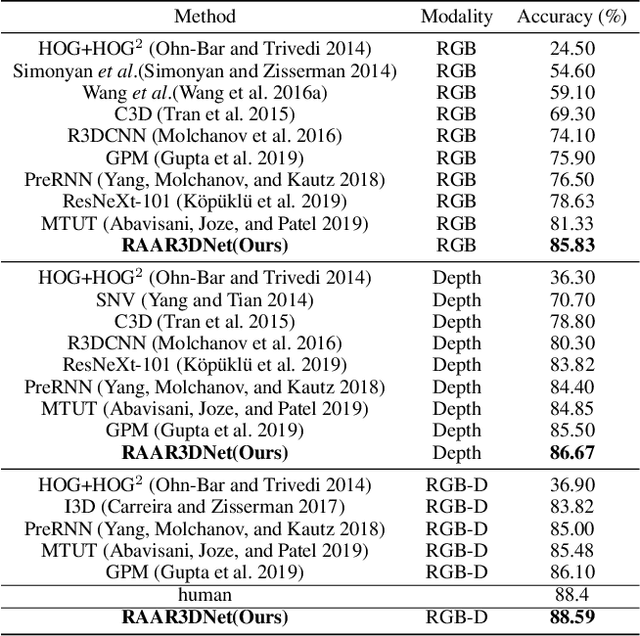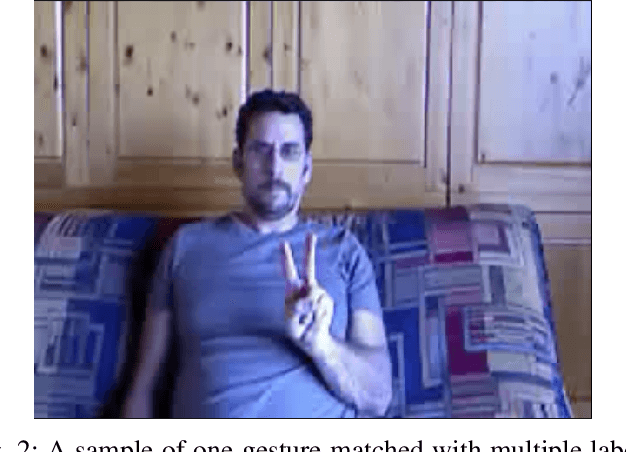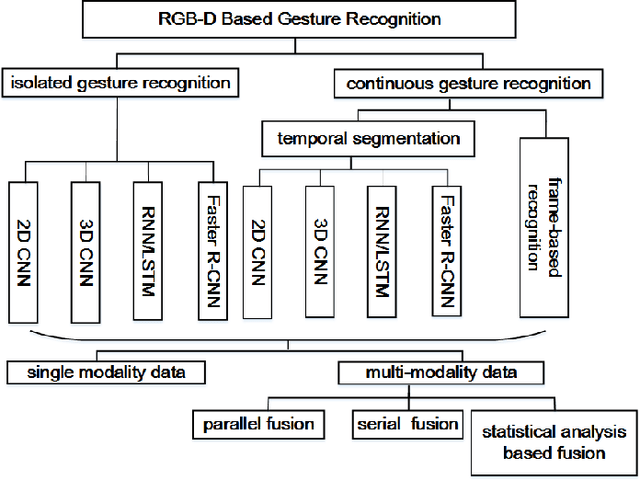Yunan Li
Enhanced Contrastive Learning with Multi-view Longitudinal Data for Chest X-ray Report Generation
Feb 27, 2025Abstract:Automated radiology report generation offers an effective solution to alleviate radiologists' workload. However, most existing methods focus primarily on single or fixed-view images to model current disease conditions, which limits diagnostic accuracy and overlooks disease progression. Although some approaches utilize longitudinal data to track disease progression, they still rely on single images to analyze current visits. To address these issues, we propose enhanced contrastive learning with Multi-view Longitudinal data to facilitate chest X-ray Report Generation, named MLRG. Specifically, we introduce a multi-view longitudinal contrastive learning method that integrates spatial information from current multi-view images and temporal information from longitudinal data. This method also utilizes the inherent spatiotemporal information of radiology reports to supervise the pre-training of visual and textual representations. Subsequently, we present a tokenized absence encoding technique to flexibly handle missing patient-specific prior knowledge, allowing the model to produce more accurate radiology reports based on available prior knowledge. Extensive experiments on MIMIC-CXR, MIMIC-ABN, and Two-view CXR datasets demonstrate that our MLRG outperforms recent state-of-the-art methods, achieving a 2.3% BLEU-4 improvement on MIMIC-CXR, a 5.5% F1 score improvement on MIMIC-ABN, and a 2.7% F1 RadGraph improvement on Two-view CXR.
LES-Talker: Fine-Grained Emotion Editing for Talking Head Generation in Linear Emotion Space
Nov 14, 2024Abstract:While existing one-shot talking head generation models have achieved progress in coarse-grained emotion editing, there is still a lack of fine-grained emotion editing models with high interpretability. We argue that for an approach to be considered fine-grained, it needs to provide clear definitions and sufficiently detailed differentiation. We present LES-Talker, a novel one-shot talking head generation model with high interpretability, to achieve fine-grained emotion editing across emotion types, emotion levels, and facial units. We propose a Linear Emotion Space (LES) definition based on Facial Action Units to characterize emotion transformations as vector transformations. We design the Cross-Dimension Attention Net (CDAN) to deeply mine the correlation between LES representation and 3D model representation. Through mining multiple relationships across different feature and structure dimensions, we enable LES representation to guide the controllable deformation of 3D model. In order to adapt the multimodal data with deviations to the LES and enhance visual quality, we utilize specialized network design and training strategies. Experiments show that our method provides high visual quality along with multilevel and interpretable fine-grained emotion editing, outperforming mainstream methods.
Multi-scale Information Sharing and Selection Network with Boundary Attention for Polyp Segmentation
May 18, 2024Abstract:Polyp segmentation for colonoscopy images is of vital importance in clinical practice. It can provide valuable information for colorectal cancer diagnosis and surgery. While existing methods have achieved relatively good performance, polyp segmentation still faces the following challenges: (1) Varying lighting conditions in colonoscopy and differences in polyp locations, sizes, and morphologies. (2) The indistinct boundary between polyps and surrounding tissue. To address these challenges, we propose a Multi-scale information sharing and selection network (MISNet) for polyp segmentation task. We design a Selectively Shared Fusion Module (SSFM) to enforce information sharing and active selection between low-level and high-level features, thereby enhancing model's ability to capture comprehensive information. We then design a Parallel Attention Module (PAM) to enhance model's attention to boundaries, and a Balancing Weight Module (BWM) to facilitate the continuous refinement of boundary segmentation in the bottom-up process. Experiments on five polyp segmentation datasets demonstrate that MISNet successfully improved the accuracy and clarity of segmentation result, outperforming state-of-the-art methods.
Exploring the Potential of Human-LLM Synergy in Advancing Qualitative Analysis: A Case Study on Mental-Illness Stigma
May 09, 2024Abstract:Qualitative analysis is a challenging, yet crucial aspect of advancing research in the field of Human-Computer Interaction (HCI). Recent studies show that large language models (LLMs) can perform qualitative coding within existing schemes, but their potential for collaborative human-LLM discovery and new insight generation in qualitative analysis is still underexplored. To bridge this gap and advance qualitative analysis by harnessing the power of LLMs, we propose CHALET, a novel methodology that leverages the human-LLM collaboration paradigm to facilitate conceptualization and empower qualitative research. The CHALET approach involves LLM-supported data collection, performing both human and LLM deductive coding to identify disagreements, and performing collaborative inductive coding on these disagreement cases to derive new conceptual insights. We validated the effectiveness of CHALET through its application to the attribution model of mental-illness stigma, uncovering implicit stigmatization themes on cognitive, emotional and behavioral dimensions. We discuss the implications for future research, methodology, and the transdisciplinary opportunities CHALET presents for the HCI community and beyond.
CarbonNet: How Computer Vision Plays a Role in Climate Change? Application: Learning Geomechanics from Subsurface Geometry of CCS to Mitigate Global Warming
Mar 19, 2024Abstract:We introduce a new approach using computer vision to predict the land surface displacement from subsurface geometry images for Carbon Capture and Sequestration (CCS). CCS has been proved to be a key component for a carbon neutral society. However, scientists see there are challenges along the way including the high computational cost due to the large model scale and limitations to generalize a pre-trained model with complex physics. We tackle those challenges by training models directly from the subsurface geometry images. The goal is to understand the respons of land surface displacement due to carbon injection and utilize our trained models to inform decision making in CCS projects. We implement multiple models (CNN, ResNet, and ResNetUNet) for static mechanics problem, which is a image prediction problem. Next, we use the LSTM and transformer for transient mechanics scenario, which is a video prediction problem. It shows ResNetUNet outperforms the others thanks to its architecture in static mechanics problem, and LSTM shows comparable performance to transformer in transient problem. This report proceeds by outlining our dataset in detail followed by model descriptions in method section. Result and discussion state the key learning, observations, and conclusion with future work rounds out the paper.
EmoSpeaker: One-shot Fine-grained Emotion-Controlled Talking Face Generation
Feb 02, 2024Abstract:Implementing fine-grained emotion control is crucial for emotion generation tasks because it enhances the expressive capability of the generative model, allowing it to accurately and comprehensively capture and express various nuanced emotional states, thereby improving the emotional quality and personalization of generated content. Generating fine-grained facial animations that accurately portray emotional expressions using only a portrait and an audio recording presents a challenge. In order to address this challenge, we propose a visual attribute-guided audio decoupler. This enables the obtention of content vectors solely related to the audio content, enhancing the stability of subsequent lip movement coefficient predictions. To achieve more precise emotional expression, we introduce a fine-grained emotion coefficient prediction module. Additionally, we propose an emotion intensity control method using a fine-grained emotion matrix. Through these, effective control over emotional expression in the generated videos and finer classification of emotion intensity are accomplished. Subsequently, a series of 3DMM coefficient generation networks are designed to predict 3D coefficients, followed by the utilization of a rendering network to generate the final video. Our experimental results demonstrate that our proposed method, EmoSpeaker, outperforms existing emotional talking face generation methods in terms of expression variation and lip synchronization. Project page: https://peterfanfan.github.io/EmoSpeaker/
Regional Attention with Architecture-Rebuilt 3D Network for RGB-D Gesture Recognition
Mar 09, 2021



Abstract:Human gesture recognition has drawn much attention in the area of computer vision. However, the performance of gesture recognition is always influenced by some gesture-irrelevant factors like the background and the clothes of performers. Therefore, focusing on the regions of hand/arm is important to the gesture recognition. Meanwhile, a more adaptive architecture-searched network structure can also perform better than the block-fixed ones like Resnet since it increases the diversity of features in different stages of the network better. In this paper, we propose a regional attention with architecture-rebuilt 3D network (RAAR3DNet) for gesture recognition. We replace the fixed Inception modules with the automatically rebuilt structure through the network via Neural Architecture Search (NAS), owing to the different shape and representation ability of features in the early, middle, and late stage of the network. It enables the network to capture different levels of feature representations at different layers more adaptively. Meanwhile, we also design a stackable regional attention module called dynamic-static Attention (DSA), which derives a Gaussian guidance heatmap and dynamic motion map to highlight the hand/arm regions and the motion information in the spatial and temporal domains, respectively. Extensive experiments on two recent large-scale RGB-D gesture datasets validate the effectiveness of the proposed method and show it outperforms state-of-the-art methods. The codes of our method are available at: https://github.com/zhoubenjia/RAAR3DNet.
ChaLearn Looking at People: IsoGD and ConGD Large-scale RGB-D Gesture Recognition
Jul 29, 2019



Abstract:The ChaLearn large-scale gesture recognition challenge has been run twice in two workshops in conjunction with the International Conference on Pattern Recognition (ICPR) 2016 and International Conference on Computer Vision (ICCV) 2017, attracting more than $200$ teams round the world. This challenge has two tracks, focusing on isolated and continuous gesture recognition, respectively. This paper describes the creation of both benchmark datasets and analyzes the advances in large-scale gesture recognition based on these two datasets. We discuss the challenges of collecting large-scale ground-truth annotations of gesture recognition, and provide a detailed analysis of the current state-of-the-art methods for large-scale isolated and continuous gesture recognition based on RGB-D video sequences. In addition to recognition rate and mean jaccard index (MJI) as evaluation metrics used in our previous challenges, we also introduce the corrected segmentation rate (CSR) metric to evaluate the performance of temporal segmentation for continuous gesture recognition. Furthermore, we propose a bidirectional long short-term memory (Bi-LSTM) baseline method, determining the video division points based on the skeleton points extracted by convolutional pose machine (CPM). Experiments demonstrate that the proposed Bi-LSTM outperforms the state-of-the-art methods with an absolute improvement of $8.1\%$ (from $0.8917$ to $0.9639$) of CSR.
 Add to Chrome
Add to Chrome Add to Firefox
Add to Firefox Add to Edge
Add to Edge